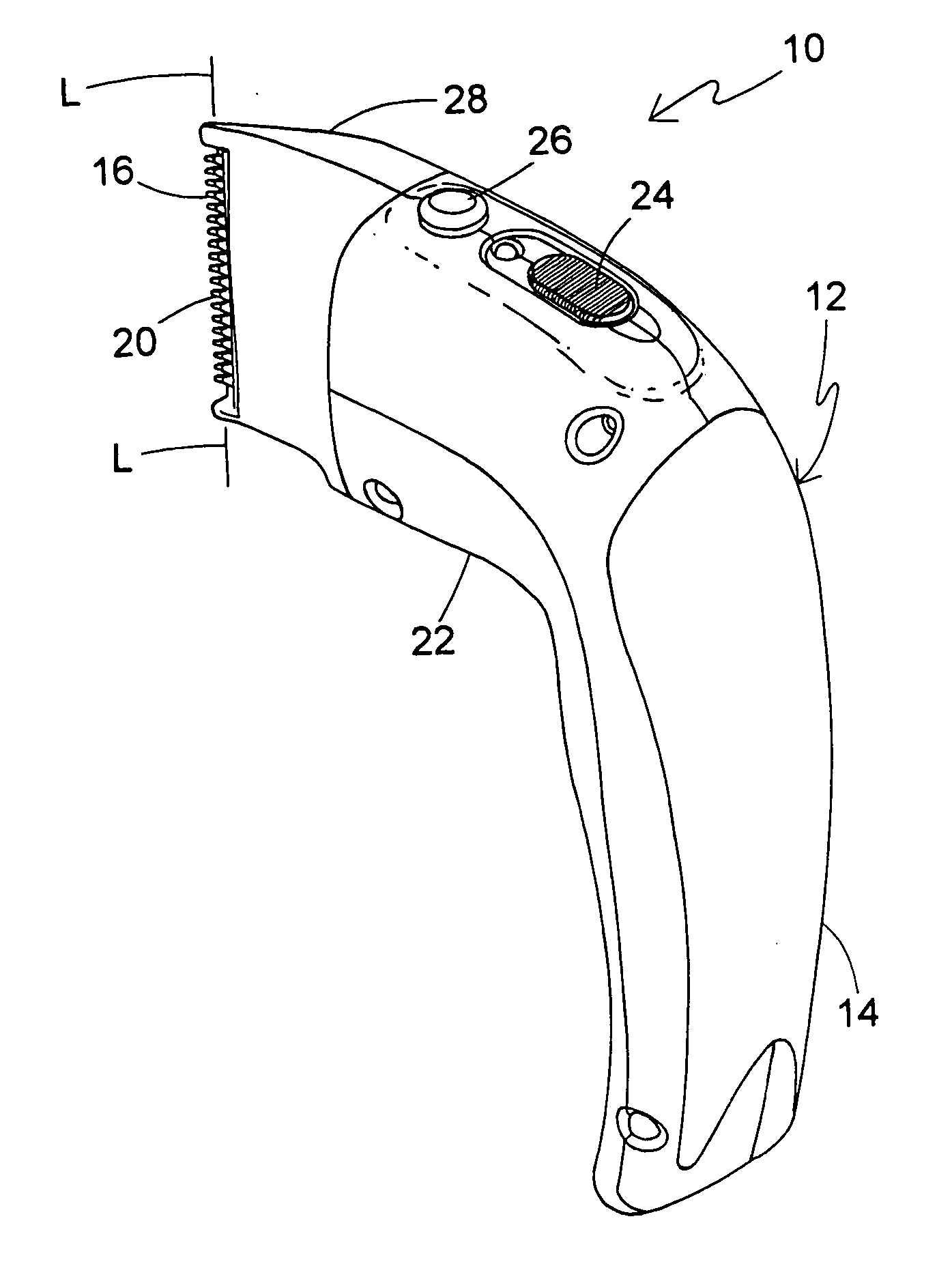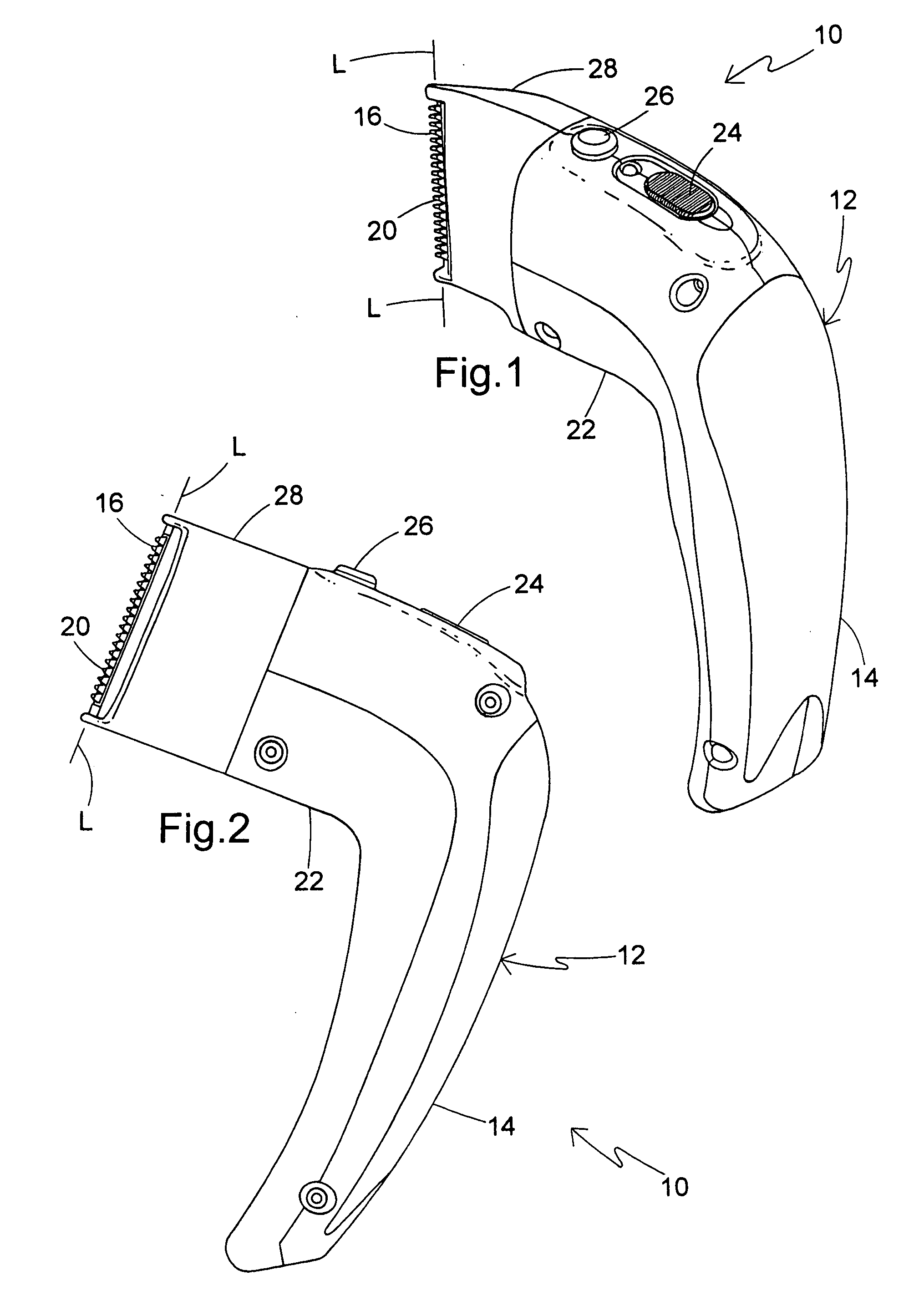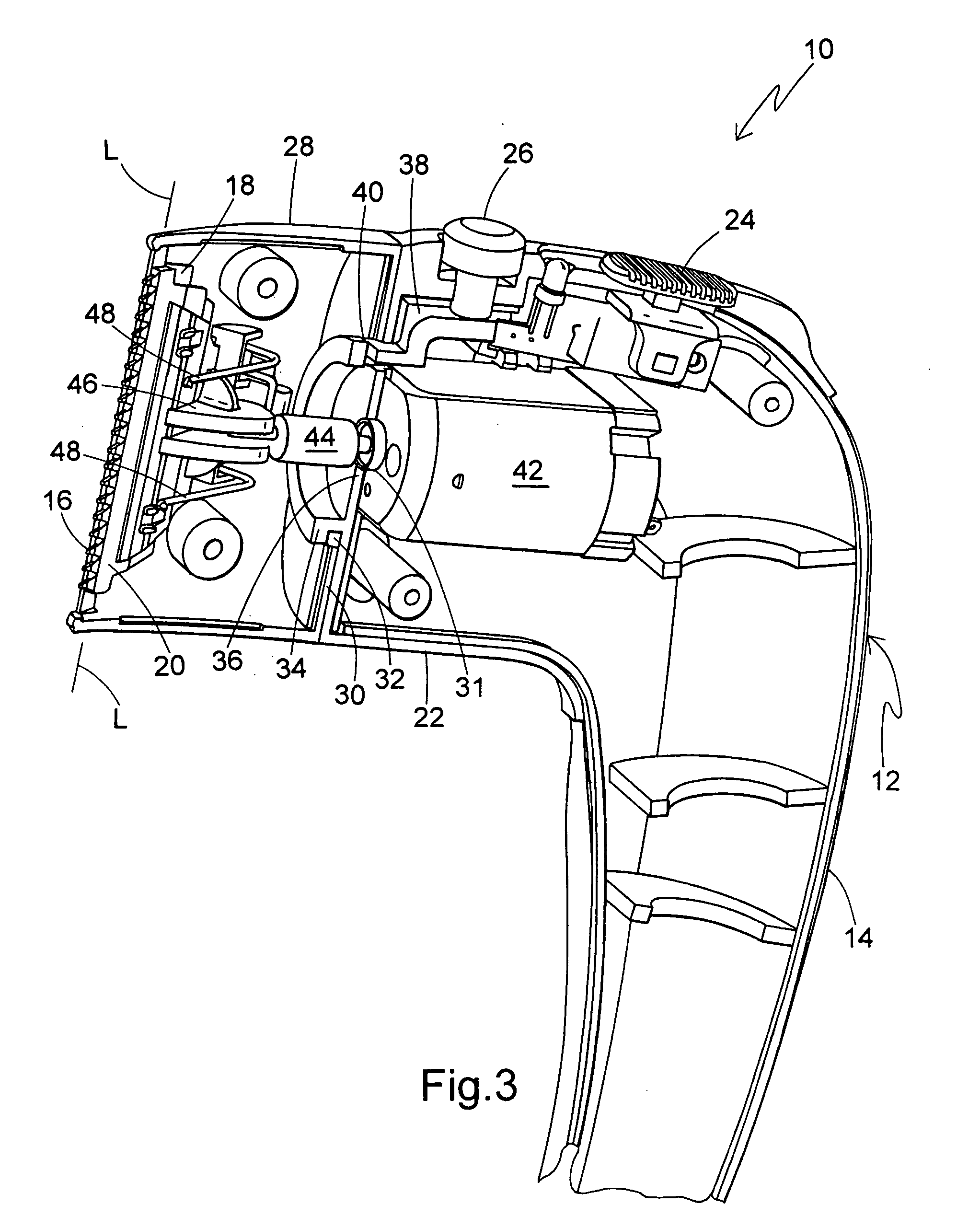Hair trimmer for use in self-cutting or on others
a hair trimmer and electric technology, applied in the direction of metal working devices, etc., can solve the problems of misleading users, hair loss, and hair severing from the hair, and achieve the effect of reducing ergonomic stress and more complete hair cutting
- Summary
- Abstract
- Description
- Claims
- Application Information
AI Technical Summary
Benefits of technology
Problems solved by technology
Method used
Image
Examples
Embodiment Construction
[0022] Referring to FIGS. 1-3, a preferred embodiment of the present invention is a hair trimmer generally designated 10 that includes a housing 12 having a handle 14 and a bladeset 16. The handle 14 is generally elongate and has a longitudinal axis. Included on the bladeset 16 is a stationary blade 18 and a moving blade 20. The moving blade 20 is configured for laterally reciprocating relative to the stationary blade 18 for cutting hair between the stationary blade and the moving blade. Such lateral reciprocation defines a cutting line “L” which is generally parallel to the axis of the handle 14 (FIG. 2).
[0023] In the preferred embodiment, the bladeset 16 is displaced transversely from the axis of the handle 14 by a displacement component 22 of the housing 12. Included on the displacement component is an on / off switch 24 and a lock actuator 26. Upon pressing the lock actuator 26, rotation of a blade assembly28 is permitted, which serves as a mount for the bladeset 16.
[0024] In th...
PUM
| Property | Measurement | Unit |
|---|---|---|
| Angle | aaaaa | aaaaa |
Abstract
Description
Claims
Application Information
 Login to View More
Login to View More - R&D
- Intellectual Property
- Life Sciences
- Materials
- Tech Scout
- Unparalleled Data Quality
- Higher Quality Content
- 60% Fewer Hallucinations
Browse by: Latest US Patents, China's latest patents, Technical Efficacy Thesaurus, Application Domain, Technology Topic, Popular Technical Reports.
© 2025 PatSnap. All rights reserved.Legal|Privacy policy|Modern Slavery Act Transparency Statement|Sitemap|About US| Contact US: help@patsnap.com



